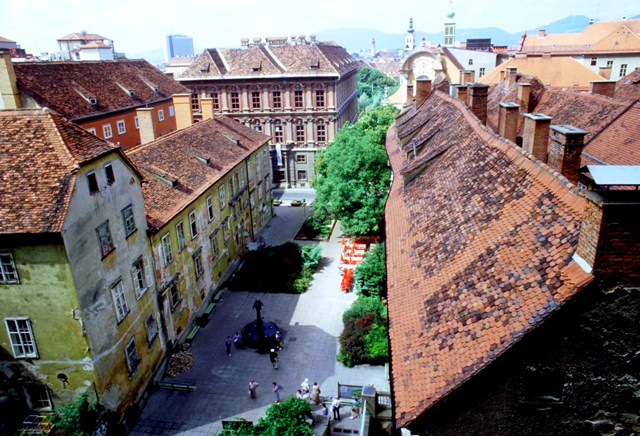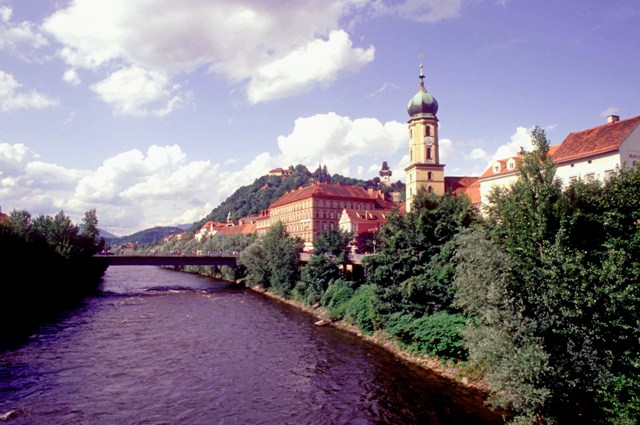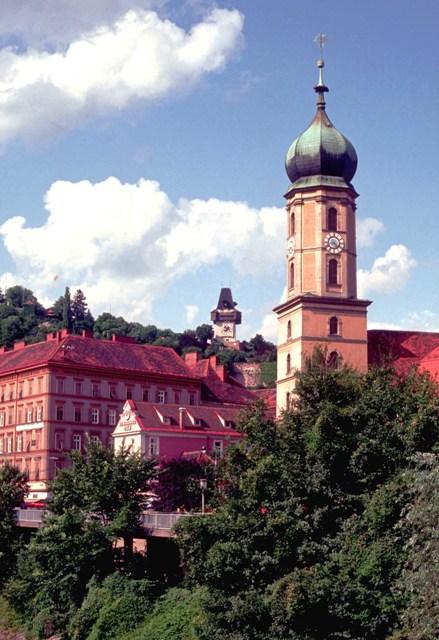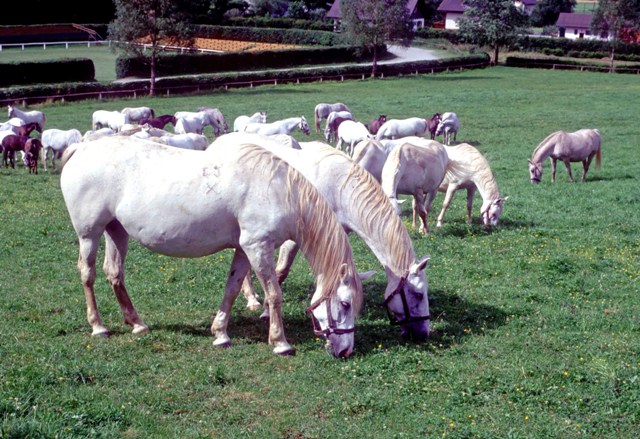GRAZ – EUROPE'S CULTURAL CAPITAL
By Ray Chatelin
Graz, Austria: Just 120 kilometers south of Vienna, the city of Graz and its citizens have always lived in the shadow of its more famous and glamorous cousin to the north.

Much like the sister of a beautiful film star, her virtues are usually overlooked, her physical assets are skipped over, and while her charm is acknowledged it is seldom scrutinized.
Yet, here is one of the crown jewels of Europe - fresh and casual in the way it approaches its history and culture, a place that proudly embraces both its arts and its farming traditions. In fact, just 49km away is the stud-farm of the Lipizzaner horses of the Vienna Riding School.
Graz is one of Europe 's great centers of art and intellect with historical sites dating from the Gothic, Renaissance, baroque and classical periods. The second largest city in Austria (439,236 as of 2018), it has one of great opera houses of Europe, with 1200 seats with a rococo interior in red, white and gold.
Unlike in Vienna, you won't find great names whose ghosts haunt the living at every creative turn. Rather it merges its past with the present without mortgaging today to yesterday.
Its most famous alumnus is actor Arnold Schwarzenegger - not as glorious, perhaps, as having Mozart or Beethoven as your cultural core, but locals don't particular care.
The character of Graz's old town is special. A great part of it is preserved in its original state - narrow streets, no auto traffic - and it's the largest "old town" in Europe that is still lived in.

Resting along the River Mur, what's left of its walls may today be a tourist attraction, but at one time were responsible for keeping the advancing Turks at bay in the late 17 th Century.
Graz was once an important crossroads between east and west. If you drive south for 53km you reach Slovenia, in what used to be Yugoslavia. And 130km southeast from the old town will take you to the Hungarian border.
The name is rooted in the Slavic word, "gradec", meaning "little castle", referring to the fortification that tops the Schlossberg, the hill that's the city's high point. It's from that vantage point you can get the best view of the city.
If you're a fitness buff walk up the 400 switch-backed steps that rise from the base at the Schlossbergplatz, not far from the main plaza just past 18 Sackstrasse. Several good restaurants are at the foot of the steps. There is a funicular handy if you overeat.
The best way to experience the city's history is to attend the many music events that dominate Graz during summer months. The Cloister of the Minorites, the Eggenberg Palace, the Stefaniensaal, the Opera House, all offer the music set in historic venues. And it's not all for classical music buffs.
The vast grounds of the Eggenberg Palace, for example, are transformed into food dispensing tents, jazz venues, and places where local bands perform.
Inside the palace, built in 1625 , is a more sedate musical menu with small ensembles playing in the Hall of The Planets, likened to a huge baroque wedding cake of a room covered with 600 gilt-edged frescoes and elaborate stucco decorations.

In the centre of the city is the Church of The Franciscans (Franziskanerkirche), completed in 1277 with its bulb-shaped bell tower cupola finished in 1643 . Go behind the church to the cloisters, with its tombs dating to the 15 th Century and a 14 th Century chapel where 10 monks, who still reside there, pray.
Within 20 minutes drive south of Graz, are the rolling Styrian hills where you can sample the region's unique Schilcher wine. Take a tour from Graz that includes lunch at the Wirtshaus Jagawirt, a picture-book Styrian hotel/restaurant/farm owned and operated by Werner and Maria Goach.
The star attraction of the region is at the village of Piber, 49k from Graz, where the Federal stud farm of the Lipizzaner horses of the Vienna Riding School is located and where tours are possible.

The small, white horses trace their heritage to 1580 when the Archduke Karl of Styria built a stud farm in the once-Styrian town of Lippiza, near Triste. After the First World War, the farm was transferred to Piber. Born black, the horses gradually turn white between the ages of two and seven.
The combination of city sophistication and country style openness makes Graz and its region a remarkable place. It is fresh, unpretentious, yet every bit as culturally urbane as its more famed northern neighbor.
PHOTOS by Toshi
1. The Graz Old Town lies below the trail up the Schlossberg, the town's highest point
2. The Graz River cuts through the centre of the city
3. The 13th Century Franciscan Church has tombs dating to the 15th Century and a 14th Century chapel
4.The stud farm of the Lipizzaner horses of the Vienna Riding School is one of the major attractions of the Graz area